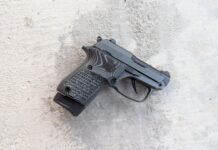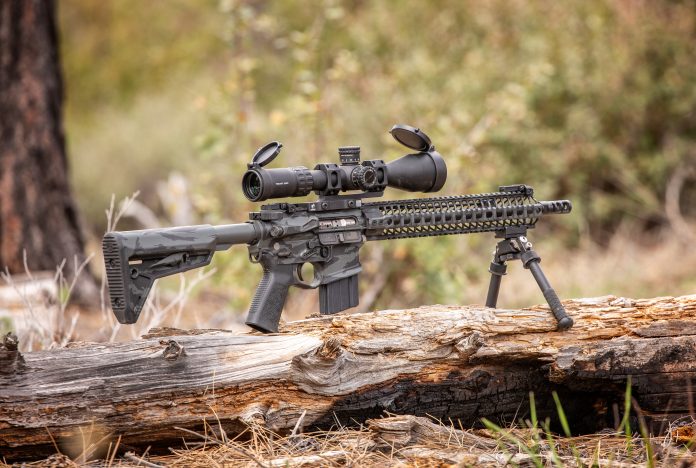
If you had an unlimited budget for time and money building the ultimate AR-15 or AR-10 rifle wouldn’t be a problem. You could just grab a huge supply of awesome pre-configured upper receiver conversions and Plug and Play to your heart’s content.
The problem is, most people don’t want to have 20 different receiver conversion kits, and most people don’t have the budget or the time to figure out such a wide-ranging addition to their firearms collection.
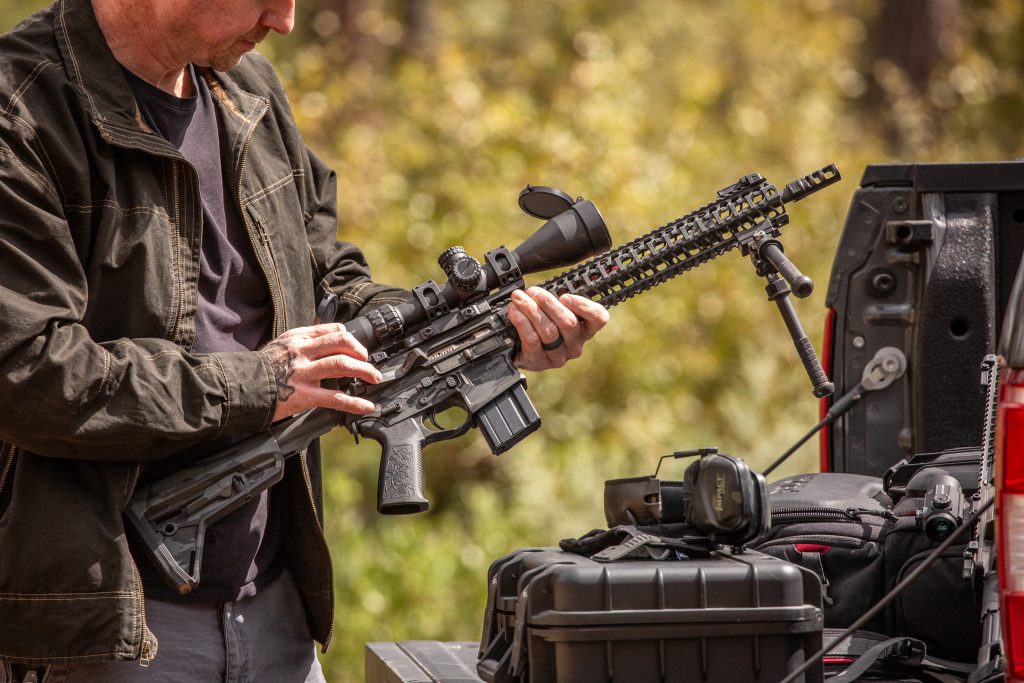
The purpose of this article is to get you thinking about whether you want to buy three different upper receiver conversions to do three distinctly different things, or whether you want to look at where you can harmonize between the upper receiver conversions or components to really hybridize your rifle platform.
What Are Your Goals for Your New AR-15 Build?
Everybody’s got a new goal with a rifle. What’s yours? If you’re the type that likes to have a dedicated rifle for everything you want to do, now’s the time to quit reading this article. This article is more about finding unique ways to save a little bit of money.
But it isn’t so much about the money, rather, it’s about the ability to move between real-world use case scenarios while using the same basic platform so you can keep the continuity and feel of your rifle platform while accomplishing the goals you might have, which cross different profiles within the use case spectrum.
If you’re not already aware of the variability and customizability of the hardware for the AR platform, rest assured, there are a plethora of options and there’s a lot you can do with this rifle.
In fact, you’re likely to be able to do more with the AR-15 if you have the right component parts than any other single platform on the market. And it will do many things quite well.

While the AR-15 is very good at doing a lot of different things, it does tend to resemble the jack-of-all-trades, rather than a gun that can do everything extremely well. You’re not going to shoot benchrest style ¼ minute of angle groups at 400 yards unless you want to budget for it. But you’ll be able to look good at 250 yards.
So, keep the concepts in perspective and understand that while you can compete favorably with the mainstream when it comes to building a rifle that can compete with the best in the field, the AR-15 is more about being utilitarian than it is about being the specialist.
The One Gun Concept
The idea of a single gun being able to do everything you need it to do across the entire spectrum of sporting uses is just now starting to be breached, thanks to the robust marketplace and the standardized fitment of the AR-15.
In fact, it’s hard to find any other rifle that can even come close to competing with the AR-15 between different classes of activities.
And yet, in full transparency, it’s hard sometimes to justify using the AR platform as a true “one gun” concept. That shouldn’t discount the value that comes from the AR platform, though.

You’d be hard-pressed to find a bolt action that you’re going to be able to use for home defense no matter how hard your video gaming buddies try to use sniper rifles for CQB on their gaming consoles.
So, when it comes to the idea of a “one gun” concept, you’re as close as you’re ever going to get when you’re basing your firearm on the AR platform.
And with that introduction let’s talk about some core ideologies that can help you achieve what you want to with the AR platform.
Three Different Build Styles That Make Sense for A Lot of Shooters
Three different build styles make sense for most mainstream shooters who want to make a gun on the AR platform. These three core build styles lay the groundwork for several other sub-segments.
But because it’s important to understand where the framework lies, we’ll be highlighting these core structures and ideas rather than trying to get too hyper-focused on what you can accomplish when you go down the rabbit hole.
Defense Centric
Right in the sweet spot for the AR platform is a defensive-centric setup. Made as a battlefield implement rather than a target shooting tool, most of the development of the AR platform over the last 40 years has been based around the idea of using the firearm in a military and law enforcement capacity.
The AR lends itself quite well to this specific use case, and while many of the other strategic build styles may take more of the marketing budget, most of the hardware on the market can at least slot into the defensive build style.
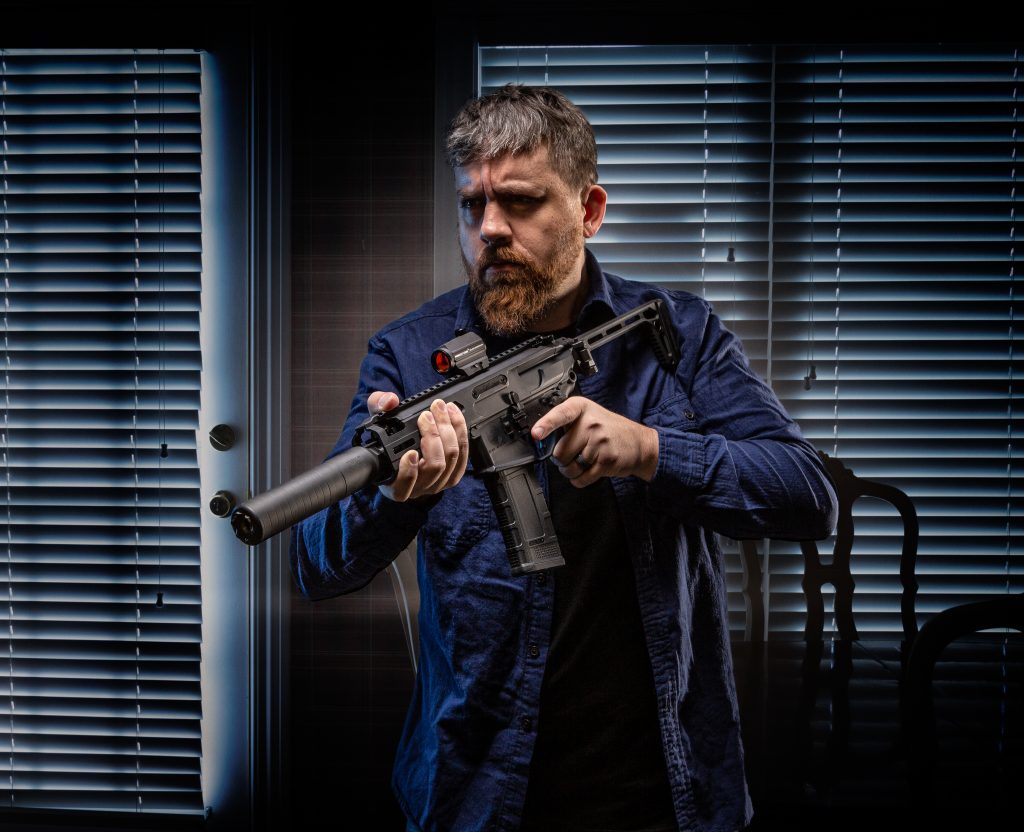
Specifically, you’re going to want to have a look at component parts and if you’re using a conversion style upper in a complete build form factor. You’re going to want to minimize overall barrel length and bulk to ensure that you can move around in a CQB scenario and be able to pivot quickly to address defensive threats.
Additionally, having the right kinds of loads and a barrel and components that are optimized for those loads, which generally prioritize larger grain weights and larger diameter bullets can make a big difference with how stopping power translates to the threat.
[Editor’s note: I generally loathe the term stopping power, but in rifles it’s a more apt term. Rifle wounding characteristics make it a realistic concept to talk about as good rounds can produce desired effects in very few shots.]
Prioritizing strategic add-ons and accessory concepts that minimize heft and bulk, while offering real-world, real-time benefits is also quite important. Think suppressor and flashlight, rather than drum mags and lasers.
Hunting Centric
Depending on the type of game you’ll be going after, the hunting-centric setup could be built in any number of ways. The obvious benefit of the AR-15 when it comes to hunting is that almost all calibers made on the AR-15 can make sense up to about 400 lbs. for animals.
That goes from the .223 Remington all the way up until you need to transition platforms to the larger .308 style AR. This also includes some of the cool newer rounds that can help you dispatch animals well into the 600-yard range.
When we’re talking about the AR-10/308 platform, the .308, as well as the 6.5 Creedmoor both, offer interesting options with the Creedmoor pushing the capabilities of the rifle well into the thousand-yard spectrum.
Let’s not get it too twisted, however. Having a cartridge that’s capable of accuracy at 1000 yards plus is not the same thing as building an AR that can shoot accurately at 1000 yards plus. It’s certainly within the realm of possibility, but not necessarily meant to be, for all budgets.
A hunting-centric build is going to prioritize longer barrels, more stability, and an optimized load to twist rate, as well as prioritizing heavier-duty or larger optics. The stability of the optic mount will also be important.
Long-Range Target Shooting
For long-range target shooting, weight bulk and mass really don’t have to be factored in unless you desire them to be.
This allows you to go extreme to improve your overall heft, stability, and long-range precision by utilizing components that can function on a more of an “optimization” concept, than a “vast increase in accuracy” concept.
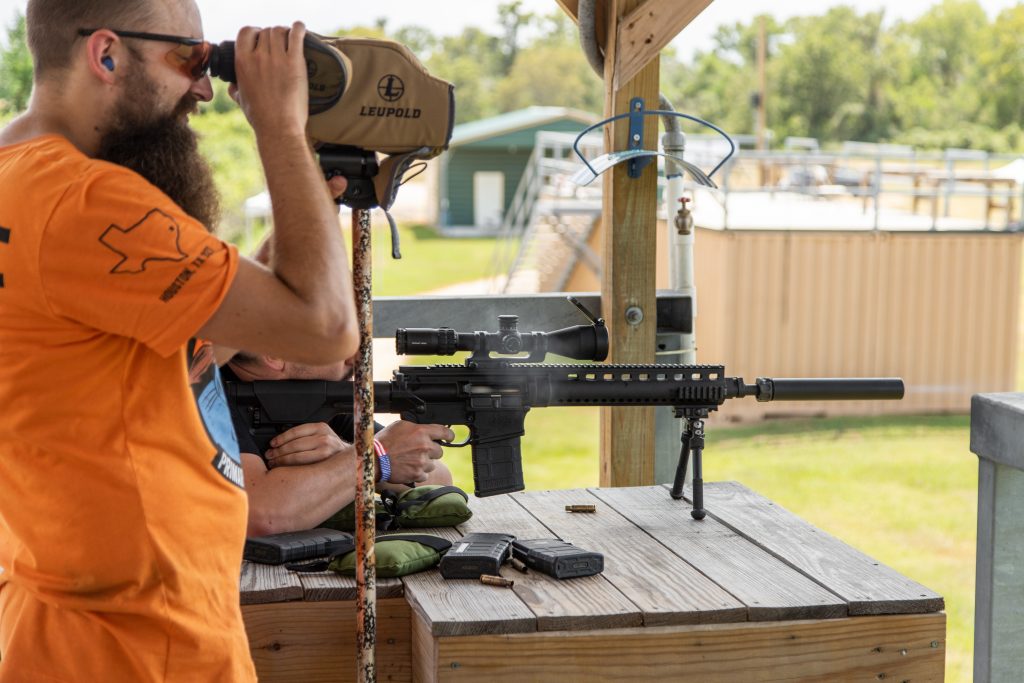
After three or four core component parts are added to a rifle platform the amount of accuracy that can be derived from new additions starts to become more incremental and less volumetric.
Using A Caliber or A Cartridge as A Focal Point
Many of the decisions you make regarding how you build your AR-15 or AR-10, especially if you’re using upper receiver conversion kits, will be based on caliber or cartridge. Picking your caliber/cartridge first can take a lot of the guesswork and difficulty out of optimization over the long term.
This is especially true if you have a high-quality lower receiver build that you can instantly plug and play with a high-quality upper receiver conversion kit.
This is also important if you need to make big gains early on and don’t have an already existing set of components to choose from. For example, utilizing the AR-10/308AR platform, and then deciding on the 6.5 Creedmoor cartridge as your focal point already puts you in the range of 750 + yards.
If you’re looking to do long-range extreme precision target shooting (at least as much as the AR platform will let you), this is going to get you more than half of the way there.
Is There Crossover Between Calibers?
Similarly, if you’re looking for something that can hunt moderate and large game and allows you to do a significant amount of depredation, while still giving you some advantage in a home defense scenario. Choosing something like the 6.8 SPC might make a lot of sense.
Though some considerations picking a single caliber can’t address on its own. One glaring example might be choosing the 6.8 SPC expecting it not to go through multiple walls if you miss your primary defensive target.
Having this concern with the second hit capability can be challenging to overcome. Similarly, if one were to pick the .300 Blackout with a subsonic load, it almost instantly mitigates most of the threat that comes from second hit probability, especially if you hit your primary target.
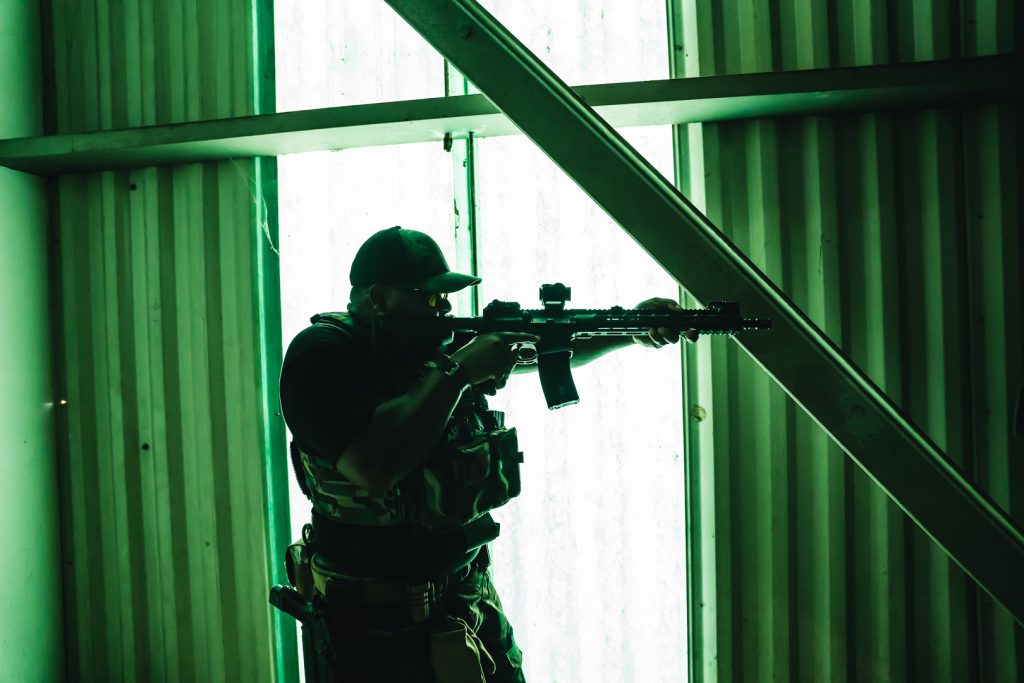
These are similarly sized cartridges and grain weights, and yet they behave very differently in CQB.
You could always stay in the mainstream and utilize the .223/5.56 build that many AR15’s come out of the factory with. It’s been a solid setup for decades, in a variety of use cases.
Defensive Builds – Calibers and Cartridges to Consider
If it’s purely a CQB-type residential defensive weapon, few cartridges make more sense than the .300 Blackout, especially with the use of a suppressor. If you have access to a suppressor and you want to minimize second target hit probabilities, very few cartridges make more sense than a subsonic .300 Blackout for a CQB defensive build.
Otherwise, the 6.8 SPC, as well as a 6.5 Grendel, and the 223/5.56, are excellent choices for home defense.
Hunting Builds – Calibers and Cartridges to Consider
When looking to build a hunting-centric AR, several rounds make a lot of sense. Namely, the .223/5.56; the 300 Blackout in both supersonic and subsonic loads; the .300 Ham’r; the 6.5 Grendel, and the 6.8 SPC, with an honorable mention going to the 350 Legend. All of these are done easily on the AR-15 platform.
If you already know you want to be on the 308 AR platform, 6.5 Creedmoor makes an excellent option, with the 308 Winchester being an excellent choice as well, considering the massive amount of adoption across the market and the variety of loads available.
There are some caveats to the listed cartridges when it comes to hunting efficacy.
The .350 Legend is a straight-walled cartridge, which is an excellent choice in certain states where Straight walled cartridges are required for hunting certain game.
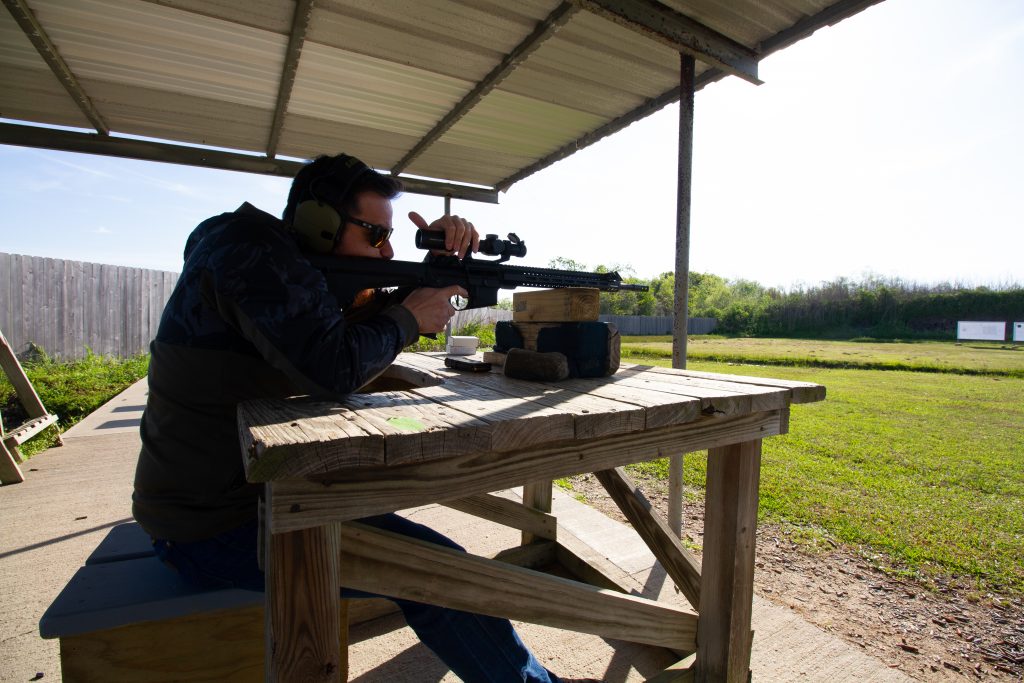
However, because of the bulk of the projectile and the way the cartridge is designed, it is limited in its overall effective range when taking large animals.
At the extreme, the 350 Legend should not be used beyond 250 to 275 yards if you need to cleanly dispatch a very large animal. At anything under that range, it makes a lot of sense if you’re already adopting the cartridge.
Can 300 Blackout Be Good for Hunting and Home Defense?
The 300 Blackout, as cool a cartridge as it is in subsonic loads for CQB and Home Defense, subsonic loads are generally not going to be the best in the field as you probably have an operating range of up to about 175 yards, and even then, that might be pushing it for some use cases.
On small and moderately sized deer and where a suppressor makes a lot of sense, it’s hard to go wrong with a subsonic load in the 300 Blackout at short range. But understand the limits of the ballistics.
When you get into the supersonic rounds, there are better offerings, but this gives you a single upper that can switch between home defense purposes and hunting purposes quite well if it fits in that tight range of carryover
The .223 and the 5.56 are going to max out at about 400 lbs. of game animal, and to about 275 yards when it comes to ballistic efficiency. That may not be a problem for hunting, depending on what game you’re after.

Is 300 Ham’r a Valid Option?
The .300 Ham’r, as interesting and promising as it may be, still only has a single supplier of ammunition and the demand far outweighs the supply given the recent supply chain issues.
Even though it’s SAAMI spec at this point, you’re going to need to wait sometime before you see the mainstream adoption of the round.
What About The Other .30 Caliber Rounds?
The 6.8 is roughly equivalent to the .308 Winchester with a smaller form factor – great for hunting, depending on what you’re trying to stalk.
Where it might not shine, is that a lot of the round configurations and off-the-shelf ammunition builds are geared towards law enforcement, military, and defensive uses.
With regards to the 6.5 Grendel, if you don’t need to reach past 550 yards or so, the 6.5 Grendel competes relatively well with the 6.5 Creedmoor in a much smaller form factor.
For hunters that want substantially similar performance in the early part of the distance range, the 6.5 Grendel might make a lot of sense.
Target Shooting Builds – Calibers and Cartridges to Consider
The most obvious cartridge here is on the AR-10/308 AR platform, and that is the 6.5 Creedmoor. It’s so far ahead of the rest of the competitors if what you want to do is excel at target shooting on an AR rifle, that it’s hard to have any other calibers in the discussion.
That said if you must build on an AR-15 there are some interesting cartridges and calibers that might make sense so long as you’re not trying to get into the extreme precision shooting ranges that reach Beyond 650 yd.
A couple calibers that come to mind are the 224 Valkyrie, and the 6.5 Grendel. However, an honorable mention could be made for the 223 Wylde, which will squeeze a little bit of extra accuracy out of bulk 5.56 and 223 Remington ammo while still giving you a lot of options for general use.
There’s always going to be some specialty cartridge you can choose to optimize around, but the above offer some mainstream options with a lot of support already intact.
Conclusion
The sky really is the limit with the AR15, and even with the AR-10/308AR. Where these guns shine is in the variability of use cases and the carryover between different builds that can optimize on one end and maintain performance on another.
While certain calibers, cartridges, or components might favor a specific style of build, more often than not, that Venn Diagram that shows the carryover in the middle, is likely to have a very synergistic center overlay when it comes to the AR platform.


